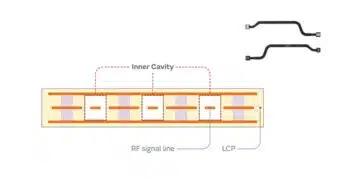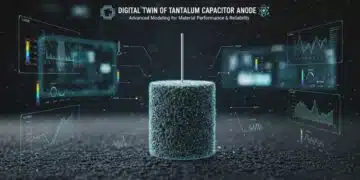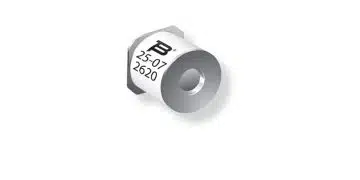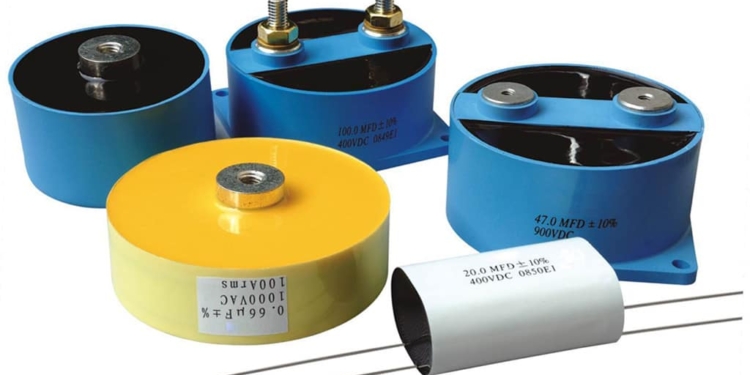The performance of an electronic system can be significantly degraded by electromagnetic disturbances. This type of performance degradation is referred to as electromagnetic interference (EMI). Capacitors are the main devices used to suppress EMI noise in electronic circuits, and, for many years, decoupling and bypass capacitors have been used to suppress electronic noise generated on PCBs. Specific design of discoidal MLCC multilayer ceramic capacitors and planar arrays is well suited to meet this function.
EMI encompasses waveform distortions, unwanted voltage variations, and frequency variations. In electronic circuits, the main sources of electronic noise include regulators, power supplies, integrated circuits, oscillators, and amplifiers. The main methods of electronic noise transmission in electronic systems are conduction and radiation. In low frequency systems (usually below 30MHz), conduction is the main method of electronic noise transmission. Radiation is mainly restricted to high frequency electronic systems. For electromagnetic interference to occur, the following are required: an energy source, a receptor, and a coupling path between the energy source and the receptor. In most cases, electromagnetic interference is suppressed by eliminating the energy.
To meet the growing demand for faster systems, designers have been increasing the clock speeds of electronic systems. Sharp-edged electrical transitions are a major source of internally-generated electronic noise. Use of high-speed circuits has, therefore, contributed to increased EMI interference in electronic systems, hence the need for effective EMI reduction techniques. Shielding is one of the most effective methods of eliminating radiated noise in electronic systems. The shield absorbs radiated energy and dissipates it as heat. In some applications, it is difficult to eliminate the conducted energy. For such electronic systems, EMI filters are used to suppress electromagnetic interference.
EMI Filtering Using Discoidal Multilayer Capacitors and Planar Arrays
EMI filters are available as standalone capacitors or combinations of capacitors and inductors. Different configurations of capacitor/inductor combinations can be used depending on various circuit parameters and the complexity of the EMI problem. Feed though capacitors are usually used when the circuit impedance is high. In addition to shielding and filtering, spread spectrum technique is also widely used to reduce EMI interference in electronic systems.
Multilayer ceramic capacitors are widely used in EMI filtering. These inexpensive capacitors are highly effective in reducing electronic noise in a wide spectrum of electronic systems. The capacitance and parasitic characteristics of a capacitor greatly determine its effectiveness in EMI reduction. The most common types of capacitors used in EMI reduction are tubular capacitors, planar array capacitors, and discoidal multilayer ceramic capacitors.
Discoidal Multilayer Ceramic Capacitors
Discoidal multilayer ceramic capacitors offer high reliability, and they are widely used in EMI filtering systems. Compared to ceramic tubular capacitors, multilayer ceramic discoidals are less susceptible to internal cracking. The filter assembly process exposes components to relatively harsh conditions that can make fragile capacitors to fail. The robustness of the multilayer ceramic discoidals enables them to withstand this rigorous process without sustaining damage.
Discoidal multilayer ceramic capacitors are available in a wide range of capacitances, usually from a few picofarads to several microfarads. It is, therefore, not difficult for filter designers to get discoidal capacitors with parameters that are suitable for a particular application. Furthermore, multilayer ceramic discoidals offer higher stability compared to most capacitors used for EMI filtering. In addition, the low ESL of these capacitors enhances their suitability as a choice for EMI filtering applications.
The configuration of discoidal multilayer ceramic capacitors makes it possible to mount them into a wide range of filter designs, while their geometry enables them to deliver impressive RF performance characteristics. Furthermore, discoidal multilayer ceramic capacitors have impressively high self-resonant frequencies.
Multilayer Ceramic Planar Capacitor Arrays
A typical multilayer planar array is a block of ceramic that contains multiple capacitors, ground lines, and feedthroughs. Multilayer planar arrays are mainly designed for use in electromagnetic interference filter connectors. Filter connectors are usually designed to enable multiple signal and power cables to enter the equipment shielding system at a single point. A typical filter connector is a bi-directional device that prevents noise from entering into an electronic system whilst ensuring that the system does not produce electronic noise. Use of filter connectors eliminates the need for board level filter circuits. Although some filter connectors are designed to use tubular and discoidal capacitors, planar capacitor arrays allow the highest connector pin density.
Apart from providing multiple capacitors per device, a planar array allows multiple capacitor values per device. In addition, each hole of the planar array is designed to allow multiple electrical function alternatives. The multiple layers of the dielectric of a planar array are usually separated by screen-printed sheets of ceramic tape material. Each of these sheets has a pattern of electrodes. The EMI attenuation properties of a planar array capacitive filter is determined by the configuration of the array’s electrodes. To produce a monolithic structure, the conductive elements and dielectric materials of a planar array package are usually fired at high temperature after assembly. The sophistication of the planar array makes it one of the most advanced integrated passive components. Planar arrays have characteristics that make them an unmatched choice for capacitive EMI filtering systems.
Planar capacitive filters are smaller in size and provider better performance compared to discrete tubular or discoidal capacitors. The bidirectional nature of planar array filter devices allows them to suppress unwanted noise travelling out of or into the electronic system. Transient voltage suppression diodes are used in various electronic circuits to filter voltage spikes. The planar array design allows accommodation of surge protection diodes to protect electronic systems against harmful voltage spikes from lightning, electrostatic discharge (ESD), and so on. Ferrites are commonly added to EMI filtering circuits where inductance is required. The design of the planar array allows addition of ferrite elements to the filtering device. The impressive properties and flexibility of the multilayer ceramic planar capacitor arrays make them the preferred choice for use in high performance applications such as military and aerospace applications.
Some avionic and military systems have complex EMI problems and require special planar array capacitive filters. Custom-configured planar arrays with parameters that meet the unique requirements of a system are fabricated for such applications.
































